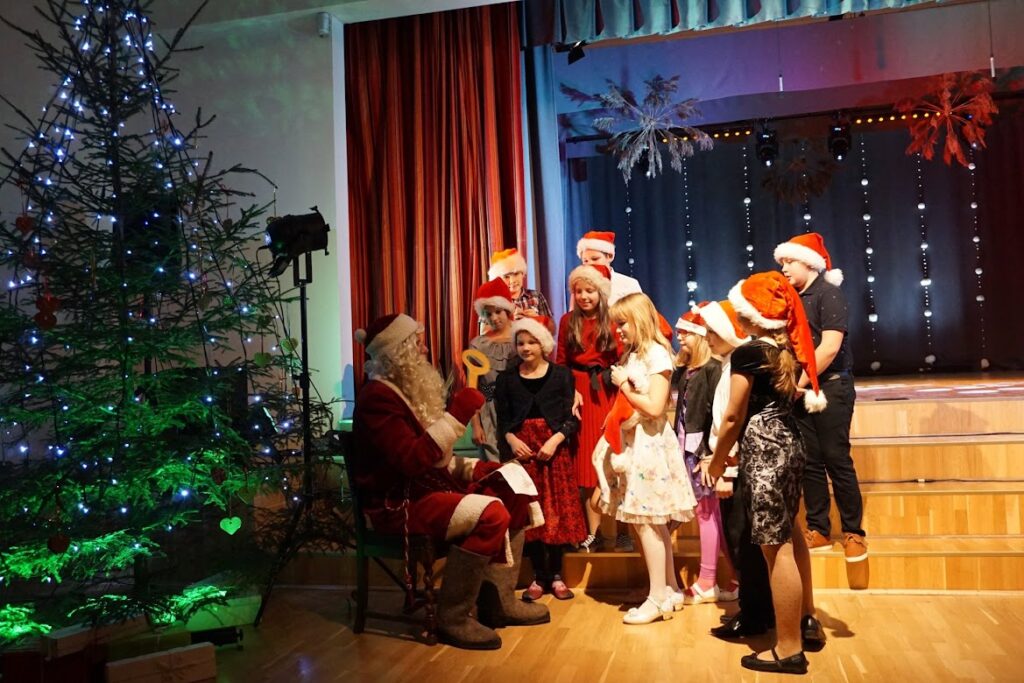Christmas remains the most cherished holiday in Estonia, representing a unique fusion of the traditional and modern, the secular and the religious. While heavily influenced by Nordic customs, Estonia’s Christmas celebration reflects a deep connection to its folk heritage, blending ancient pagan traditions with Christian influences.
Like in other Nordic countries, Estonians primarily celebrate Christmas on Christmas Eve. However, the festive season begins weeks earlier, with the first Advent Sunday marking the start of preparations. Advent calendars and candles are common sights during this period, as households and communities anticipate the upcoming holiday.
Folk traditions
In Estonian culture, Christmas is known as jõulud, a pre-Christian term derived from the Scandinavian word jul. This ancient name connects Estonia to its Nordic roots and predates the introduction of Christianity in the region. For Estonians, jõulud holds a dual significance: it celebrates both the birth of Christ and the midwinter holiday period, which historically marked the solstice.
Traditionally, the Christmas season began on St. Thomas’s Day (21 December) and continued until Epiphany (6 January). Coastal and island communities extended the celebrations to St. Canute’s Day (7 January). The most significant day, however, was Christmas Eve (24 December), which combined festive gatherings with solemn rituals.
For centuries, Estonians celebrated the winter solstice as the Sun’s “birthday.” During this time, it was said that “the sun was laying in the nest,” symbolizing the shortest day of the year. This belief reflects the deep connection between ancient pagan practices and the natural cycles of the year. With the solstice, the days began to grow longer, marking a return of light and warmth.

In addition to the solstice, the Christmas season also served as the culmination of late-autumn festivals such as the harvest bees, All Souls’ Day, St. Martin’s Day, and St. Catherine’s Day. These traditions, rooted in the agricultural calendar, celebrated the transition from the harvest season to the quieter winter months.
While the Christian connection to Christmas gained prominence only in the past few centuries, Estonian peasantry had long observed the holiday with unique customs. These customs reflected the practical needs and spiritual beliefs of rural communities. For instance, St. Thomas’s Day marked the start of the winter solstice period, a time of preparation for the long festive season. Families brewed ale, slaughtered pigs, and completed household chores while observing bans on noisy activities such as spinning or grinding, as these were believed to disturb the spirits.
Christmas Eve and Night were the most sacred times of the season, steeped in rituals and mysticism. Families left food on the table overnight as an offering to ancestors, believing they would visit the house. Fires were kept burning in the hearth as an act of sun worship, symbolizing the return of light. Many sought to predict the coming year’s weather and harvest by interpreting the stars, frost, or other natural signs.

The sauna was an integral part of Estonian Christmas traditions. Families would clean their homes and bathe in the sauna before dressing in new festive clothes for the evening church service. This ritual symbolized physical and spiritual purification, ensuring a fresh start for the new year.
Christmas symbols and cuisine
Estonian Christmas traditions feature a mix of ancient practices and newer influences. Santa Claus, for example, has become a prominent figure, delivering gifts on Christmas Eve.
One of the oldest and most unique customs was the bringing of straw into the home. While connected to the biblical story of Jesus’s birth, this tradition likely predates Christianity. Straw (or hay in southern Estonia) symbolized fertility and abundance and provided a playful space for children during the festive season.
Another tradition was the crafting of Christmas crowns, intricate decorations resembling chandeliers. This practice, inspired by Finnish and Swedish customs, was especially popular on the island of Vormsi, where Swedish-speaking communities maintained close cultural ties with Scandinavia. While the tradition faded by the 20th century, it saw a revival in the 1970s.

The Christmas tree, a relatively recent addition to Estonian celebrations, originated from Germanic culture in the mid-19th century. Initially popular among the Baltic-German aristocracy, the custom spread to towns and rural areas, where trees were decorated with handmade toys, sweets, and later, candles.
Traditional Estonian Christmas meals emphasize abundance and communal feasting. Pork with sauerkraut and blood sausages remain staples, accompanied by home-brewed ale or mead.
It was customary to serve seven to twelve dishes on Christmas Eve, symbolizing prosperity for the coming year. Special Christmas bread, known as the Christmas barrow, was baked for the occasion and even shared with domestic animals as a sign of goodwill. Coastal communities often incorporated fish into their feasts, reflecting local resources.

The Soviet era and modern revival
During the Soviet occupation, Christmas was officially banned, and public celebrations were limited to New Year’s Eve. Despite this, many Estonians continued to observe Christmas in private, attending church services and lighting candles on the graves of loved ones. These acts of quiet defiance symbolized resistance against Soviet atheism and ideology.
With Estonia’s independence in the 1990s, Christmas regained its rightful place as a public holiday. The traditions of Christmas trees, Santa Claus, and festive gatherings were revived and embraced. New customs, such as pre-Christmas celebrations with mulled wine, have also become popular, blending Finnish and Scandinavian influences with local traditions.

One of Estonia’s modern traditions is the declaration of Christmas Peace, announced annually on 24 December by the mayor of Tallinn from the balcony of the medieval city hall. This practice, dating back to the 17th century under Queen Kristina of Sweden, underscores the enduring significance of Christmas in Estonian culture.

